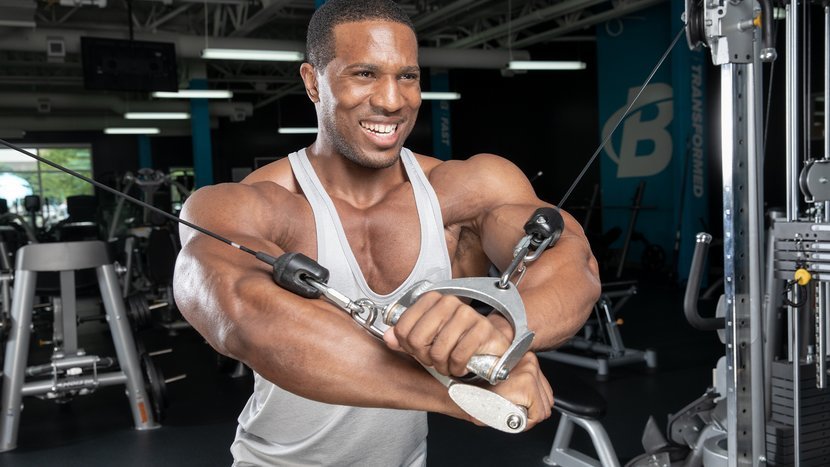When you think about what basketball players do, strength training isn't the first thing that comes to mind—especially regarding their vertical jump. Most people assume that it's strictly plyometrics and speed work, but Team Bodybuilding.com member Myree "Reemix" Bowden has moves that say the opposite. And when someone can reach the heights that he does, you don't dare argue.
Bowden, a former Harlem Globetrotter, is known for his insane dunking skills that caused jaws to drop in contests all over the country, for Slamball, and now for his performance as a coach. It took more than genetic blessings to build up to an over 50-inch vertical—and that was after he suffered stress fractures in both of his shins in 2006.
"I have always been an athlete, but I was able to improve upon that by doing resistance training," Bowden says. "I didn't really understand how to get faster and jump higher until I transferred from junior college to my Division 1 school [University of the Pacific]. That's when I was introduced to Olympic lifts and combining them with plyos."
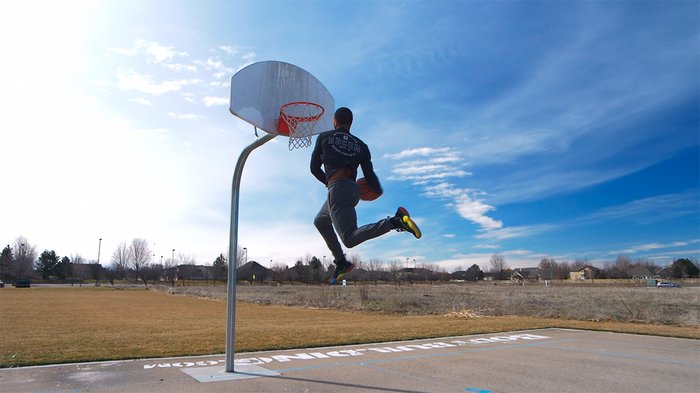
In that one summer alone, Bowden increased his vertical from 34 to 47 inches. Let that sink.
Maybe you don't have insane genetics, but if jumping higher and soaring over your opponents is a goal, Bowden suggests giving more than just plyometrics a try.
"You can be quick and work on speed, but you still need strength and muscle engagement," he says. "Since jumping is a full-body motion, you need multi-muscle lifts like power cleans, deadlifts, hang cleans, and snatches. Now you have speed and strength at the same time, which is not only going to up your jump game, but do it at a faster and stronger pace."
Bowden's training method is to modify certain lifts to focus on the vertical motions, with some plyo and speed work mixed in. He places a heavy focus on explosion and simulating the jumping motion. Here's his workout, including the five key movements he trains to get those crazy hops.
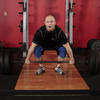
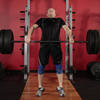

BodyFit
$6.99/month- 2,500+ expert-created single workouts
- 3,500+ how-to exercise videos
- Detailed workout instruction
- Step-by-step workout tips
- Training at gym or at home
- Access to Workout Plans
- Access to Bodyfit App
- Store Discounts
Already have a Bodybuilding.com account with BodyFit? Sign In

What comes with BodyFit?

- Instructional Videos
Don't risk doing a workout improperly! Avoid injury and keep your form in check with in-depth instructional videos.

- How-to Images
View our enormous library of workout photos and see exactly how each exercise should be done before you give it a shot.

- Step-by-Step Instructions
Quickly read through our step-by-step directions to ensure you're doing each workout correctly the first time, every time.
Technique Tips
Modified Clean
When he videotaped his jumping, Bowden noticed that there was never a time when he was in a full-squat position.
"The movement is all at the hips, hammies, and lower back," he says. "The upper body does play a role as far as shoulder swing, but after seeing the actual jump, I decided to modify the power clean to where it was more of a high pull drop."
In his version of the clean, Bowden emphasizes the pull and bringing the weight up to the front rack explosively before quickly dropping it.
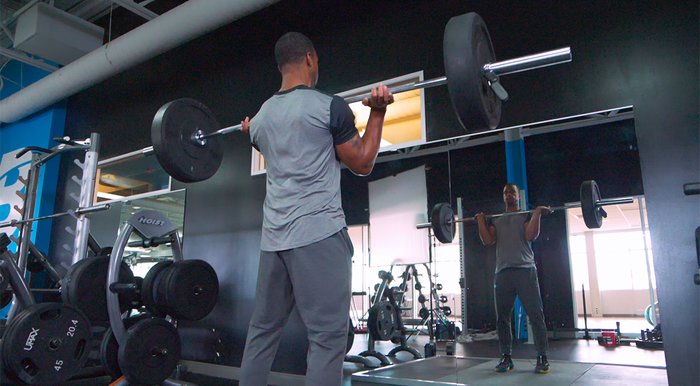
"You want to simulate a jump itself and keep the momentum going up," he says.
Modified Deadlift
This deadlift modification is similar to a Romanian deadlift, with a short motion and only a slight bend in the knees—you don't want to end up squatting. On the downward motion, pause for a moment right where you start to feel those hamstrings and lower back ignite.
"Keep the barbell close to your body and stop at the point where you would launch from in your jump," Bowden says. "Then it's all about the explosion in the hips again as you bring the barbell back to the starting position."
Single-Arm Dumbbell Snatch
Bowden says he often performs these between sets of cleans or deadlifts. Stand with your feet slightly outside shoulder width and the dumbbell on the floor between your legs. Bend your knees, keeping your back flat, and reach down with one hand. Pull the dumbbell straight up, keeping it close to your body, as you extend your knees and hips for power. When the dumbbell reaches your chest, rotate the weight under your elbow and extend it above your head. Your whole body should be working simultaneously to explode the weight.
Delayed Box Jump
You won't be jumping on and off a box at a quick pace here—the delay is crucial!
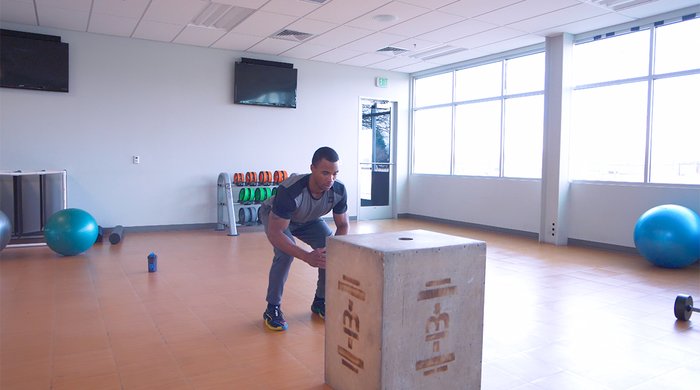
"Starting in your slight jumping position, your knees will be bent enough to where you actually feel the hamstrings firing up," Bowden says. "You should also feel your hips engaging, and your low back, and focus on keeping your abs tight. Once you feel all of these in sync, stay in that position for 1-2 seconds before jumping up so you can really generate power."
Doing this allows your body and mind to get used to feeling the muscles that should be working when you jump. He also emphasizes landing softly on your feet, or what he calls a "cat landing," which forces you to employ muscle control and is easier on your joints.
Power Sprint
These are more about gaining distance than just speed. Sure, you want to run as fast as you can, but Bowden first and foremost seeks to take big, powerful strides.
"Every step you take should be an explosive push off the ground. You should be able to generate power with your entire body," he says. Unlike the performance of a regular sprint, you're not necessarily trying to give it every ounce of what you've got. The goal is to decrease the number of steps you take to complete the 50 yards.
If you want to improve your overall athleticism for basketball or any other sport, check out Total Fitness with Andy Speer, plus more than 50 other expert-designed fitness plans in Bodybuilding.com BodyFit Elite.




